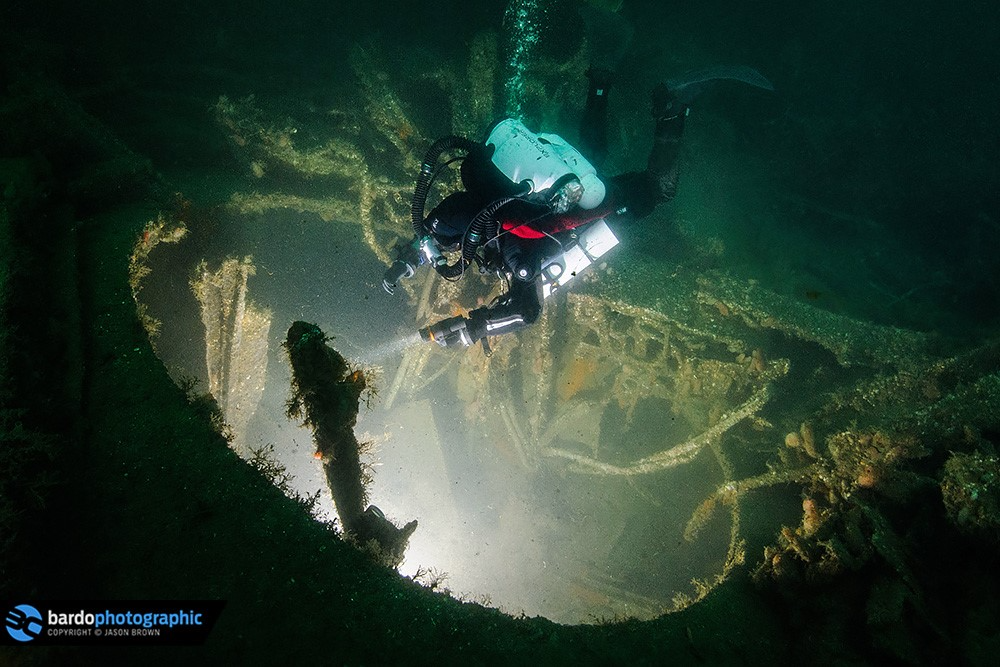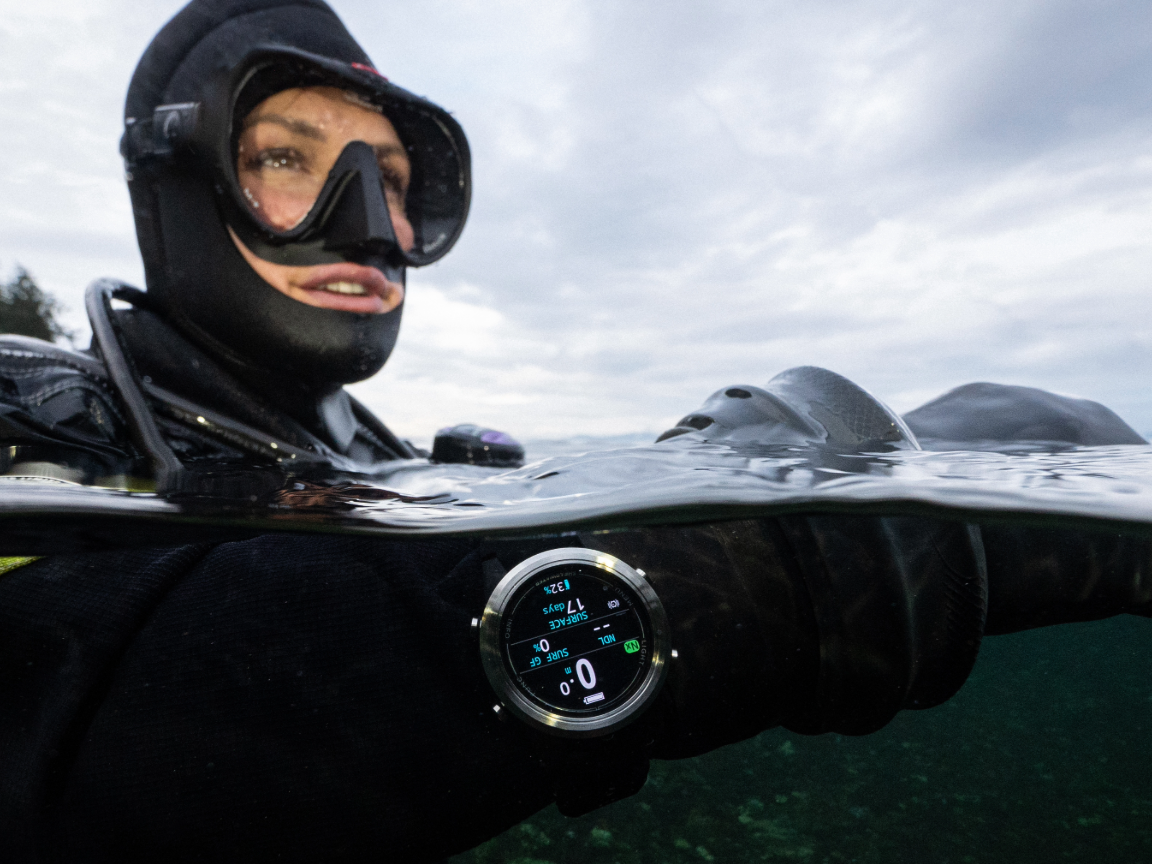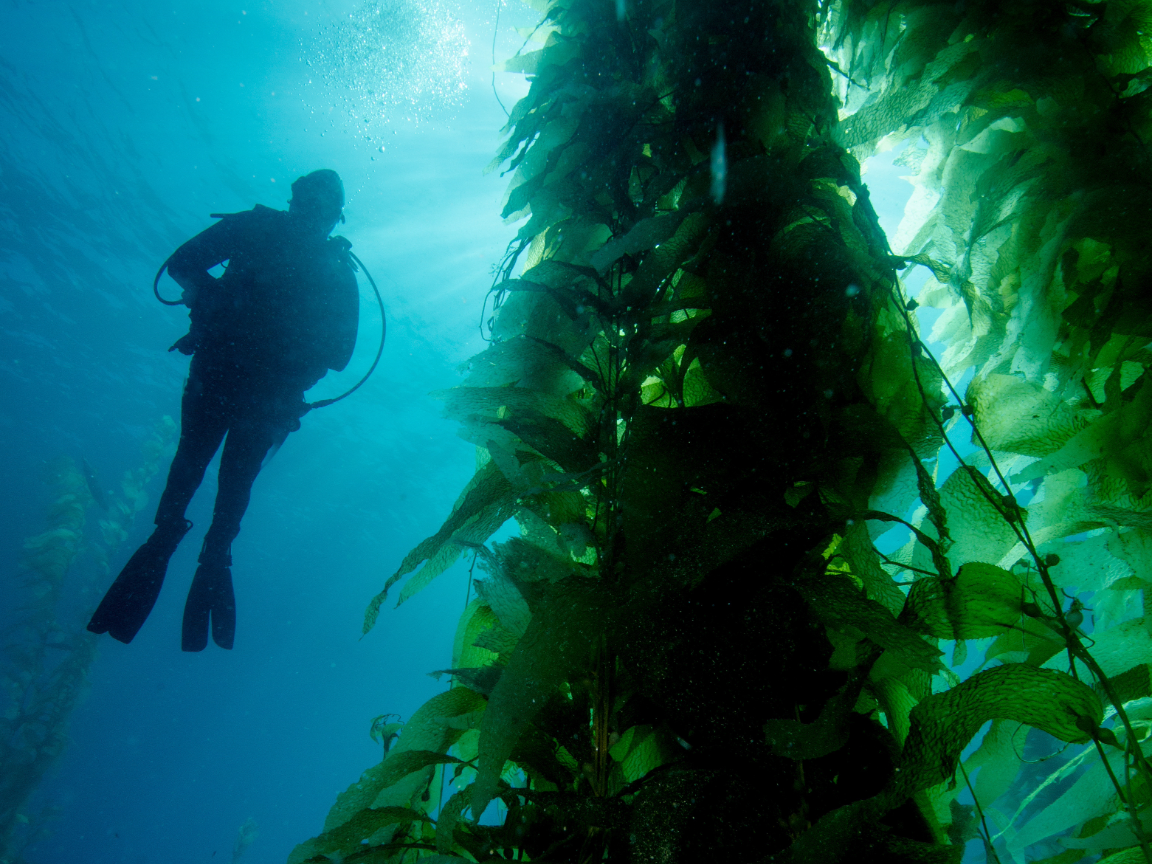One of the things I very much enjoy, is watching rockfish along a reef. Something many divers enjoy as well. The issue is that the Puget Sound’s ‘Edmonds Underwater Park’, which I support at Edmonds, Washington, does not have a rock reef. We have temperate waters in Puget Sound, variable visibility, and 16 foot tidal exchanges which lead to tidal currents and wind driven currents. The Park is 27 acres and is at its deepest at 45' near its offshore boundary, allowing us to have extended dive times but no reefs.

Photo of Bruce Higgins courtesy of Tro Ota.
So, what to do to have more rockfish and maybe some additional lingcod? Maybe we can use the local rocks for a rock reef. There are rocks nearby since a glacier covered the area 11,000 years ago providing stray rocks (erratic here and there). What are our options?
A quick detour for a second to provide some context to our situation at the Park
Some of the features our efforts have provided at the Edmonds Underwater Park years ago were wood boat hulls used to haul rocks and concrete offshore. This construction style provided wood (carbon) as well as rocks and concrete (solid substrate) to the feature so that there was food for the young critters from the wood’s decay. The hulls were loaded near shore and then placed suitably as a one-way freighter for material placement. The Park is leased from the Department of Natural Resources who became concerned about the hull placement. To this end, we abandoned that process, but rocks alone required us to have a new process and to have a longer evaluation period as this was new ground for us. Back again - what are our options?
To start, we need to rewind back to 2004 as we remembered a bunch of rocks that were sheltering an abandoned storm drain. They were the armor rocks to protect and keep the 16 inch drain in place. We chatted with the City, since it is a City Park, to see if they would mind that we removed the rocks at the now abandoned storm drain. They said it was abandoned years ago as part of their wastewater/storm water management upgrades, so they couldn't care less what happened to it. The permit for the discharge was long expired as were any uplands connections.

Photo courtesy of Bruce Higgins.
This became a source for rocks for us to use in building rock cairns to see if we could provide better habitat for rockfish and maybe if we were lucky, lingcod, which were elsewhere in the Park. This started the rock shuffling process. The best timeframe to do this was in the winter months for us as we have the highest tides during the middle of the day. This way we could bring in straps and plastic 55 gal drums to juggle the rocks free and then paddle them about 600' out into deeper water. We'd then have to stack them in a sandy patch away from eel grass and about 20’ depth (MLLW) as hopeful homes for rockfish. We tried this tinker cairn (loose rock piles) effort to see if it would work. The plus for us was that the rocks were already in the water and we could puzzle things out as we go. Many of the rocks were intertidal, so we could chip away as conditions permitted.

Photo courtesy of Bruce Higgins.
This was not a speedy process. People who are into Big Bang projects would be disappointed since we are volunteers, and only working weekends took us about 100 dives and 2 ½ years to complete. We called the Park feature “The Erratics” as the glacier erratic rocks are scattered around in the Park which are infrequently visited by divers. They were set up on 20' centers and we thought about how they had panned out as time passed so we had an intermission (not from diving - just this project).
We then observed to see how well the rockfish adapted to our efforts. We got to work on the approximately 750' of abandon pipe (another story for another time). With a two year intermission, we could track what was working and not working in these 12 cairns. We learned that things worked best if we saved the larger rocks that would not pack well, and placed them on top of a small foundation rock base. It was all about hiding spots as well as rocks to orient to.
You might think that is the end of the story, but rockfish are in decline in Puget Sound and most of the central Puget Sound basin is a sand bottom. We wanted to see what else we could do. The glacier that came through the area between 14,000 and 11,000 years ago forming a large lake on both its advance and retreat. Much of the bottom looks like a lake bottom and not rocky at all.
By 2010, new blood had arrived, and with the success of The Erratics, they decided to work on a rock wall patterned after a New England style wall. If you find a rock in your field, you shuffle it to the wall. They got going again in an area deeper than the eel grass at about 15’ depth (MLLW) and parallel to a diver trail we had completed. They spent a number of summer days in the shallow water playing what I call ‘fetch’ to gather rocks. Then in the winter, we found a source of glacier rocks which were more intertidal near where the abandoned storm drain had been. Since the rocks became available as the sand moved offshore in the winter, we went about gathering them in a similar method used for the armor rocks. But instead, with a cargo net so we could haul about 1,500lbs a trip by rolling the rocks into the net and towing away. Again, not too far a tow as we were advancing towards the supply. This seemed to be working so the project continued - actually still is.

Photos courtesy of Tro Ota and Dan Richie. First photo shows the rocks forming the Twin Peaks cairn placed in 2020 as the marker for a trail intersection. Second photos shows Humdinger rock (7,000# or 3,100 kg) placed with Crown rock (2,000# or 900 kg) rock placed on top at Tro's Seamount cairn.
We started to get greedy in 2015. There were yet larger rocks which might be placed as cap rocks if you had a way to move them. More 55 gal drums and a 2,000 lbs lift bags were added to our tools and we could set our eyes on larger erratic rocks. This greed was fuelled by the success we were having with the rock wall and The Erratics since rockfish as well as bull kelp were taking advantage of the substrate and encouraging us to do more.
The greediness continued as we found rocks which we could dig around, strap up, lift, and then paddle out to place on a base. We graduated from the rollable rocks to larger ones up to 3,000lbs. This was fun as the rocks this size did not pack well. There were lots of voids or as one of the divers likes to say, "cubbies for all the critters". Again, the rock wall was under construction. Not a speedy process, just a labor of love as the pace was slow but the rockfish and lingcod did respond well. About 2018, the Seattle Aquarium selected the rock wall site to use for their quarterly rockfish surveys. Also in 2018, we stumbled on larger rocks than 3,000lbs which we began plotting and planning for.
That could have been the end for the rocks for this kind of effort as there were not nearby rocks any longer. But, there were still adventures ahead. As we went scouting for rocks, we found the glacier had rivers on it as it retreated and we located a series of glacier-made river deltas. Unlike the terminal moraines rows at right angles to the beach in our area, there were these rows of very round river rocks parallel to shore. Yet another source for rocks that we could track and exploit. As with the uplands, they are not perfect lines but with scouting, we could retrace things. These rocks, like all the other choices, were scattered. By laying a rope path, we could sort-of follow along.

Photos courtesy of Bruce Higgins. Second photo shows Tro Ota next to the Iceberg rock placed in 2021 which came to 10,500# (4,800kg) at the Monster Island cairn.
Now, with more lifting gear and yet another ever evolving cast of characters, we started in 2017 on a series of cairns with some larger rocks. Over time, we started to move their construction closer to where the dominate diver traffic is located in the Underwater Park. The huge drawback is that there is the distance between the source rocks and the target has gotten farther away as my guess is now a ¼ mile. We had been building away from a ferry terminal near the south Park boundary with the hope of attracting divers away from the danger. One of the positive trade-offs is that the rocks have been larger so it is balanced effort. More rocks for the trip if the trip is far. Keep in mind, we are swimming them on the surface, hopefully with the current, as boats are not allowed in the Underwater Park. The joke is this is "Bruce’s Fitness Program", which to some extent it is.

Photo of Bruce Higgins courtesy of Tro Ota.
The current two cairns have grown over the past 2 ½ years. One is 137,000lbs (with a 10,700lbs cap rock) appropriately named Monster Island, after the Godzilla movies. The second is 107,000lbs (with a 8,000lbs cap rock) named Tro’s Seamount after the designer Tro Ota. The balancing act for this effort, which began so long ago, is having the rockfish and lingcod responding positively and the price of what we can afford, which is a never ending dive series trying to puzzle things out. One of the rewards is that since we are in the never-never land of the Park, we see less common critters which is always fun.
Would any one call this a light salvage? Hardly! But diving to explore the far reaches of this 27 acre Park has lead to lots of hide and seek efforts with the rocks we shuffle around. Taking scattered rocks and clustering them into habitat that is productive has been rewarding with this 1,000 baby step approach.
For me, the lesson has been slow but sure can win the race, especially if you like to dive and then dive again and again and again.

Photo courtesy of Bruce Higgins. We conduct clean up dives during warmer weather as things drift into the Underwater Park seasonally and bottles dumped by fisherman years ago near the edge of the Park really are trash.
There are non-rock features in the Park as well which the divers find interesting, but these efforts have been part of diving with a purpose with learning, teamwork, and consistent progress being the reward.
If all we did were shift rocks about this would get boring. So, we also maintain a series of over 50 buoys which mark intersections for the 2.5+ miles of trails which form a magnetic N-S and E-W grid on the bottom. Our storm conditions are mild so the trails are concrete blocks linked with ropes for divers to follow near the features. With such a flat slope, it is tough to use depth to navigate. Hence the trails. The buoys also provide a safety net for tired divers to group up on if lost and puzzle out how to continue their dive.
My suggestion would be to transition from wishing for an improved dive site to making a plan in a pragmatic way that you can follow through on with dive-by-dive progress. We have chosen a stewardship approach to advance the recreation with our diving skill. As I started, I must have had rocks in my head, but the diving sure has been rewarding.
___

Written by Bruce Higgins
Bruce Higgins learned to dive while at the University of Michigan in 1970. He became the Diving Safety Officer for Great Lakes Research Division a component of the University’s Institute of Science and Technology in 1972 while involved in research diving projects. Upon graduation in Ocean Engineering from Oregon State University he moved to the Seattle area and taught Oceanography and Electronics getting involved with Shoreline Community College’s scuba program. In 1977 Bruce became a NAUI Instructor and played a more active roll in the scuba program which he ran for 7 years. An underwater park was established in 1970 but was expanding and Bruce got connected into the Edmonds Underwater Park located in Puget Sound north of Seattle during this time and has stayed involved. Bruce became a NAUI Course Director in the late 1980’s and stayed involved with Instructor Training programs though the mid-1990’s.
His love for the Edmonds Underwater Park has lead to a long list of projects to develop the park to improve diver safety and marine life diversity. Bruce is most proud of the decrease in diver incidents in the Park since the early days due to migrating divers to features that allow interesting sites to visit and more diverse and abundant marine live. In 2008 NAUI honored Bruce with the Environmental Enrichment Award for his efforts at Edmonds. The Underwater Park Stewards, which he hosts, conducts weekend dives to deal with shepherding this City Park which is a case of many hands makes light work. The Underwater Park Stewards have been an amazing group of individuals volunteering in a shared vision for the Park.




